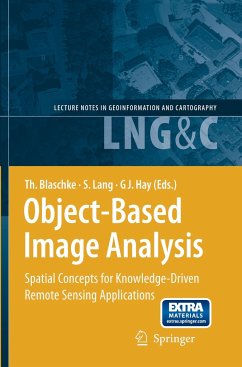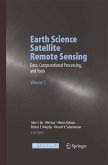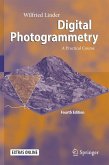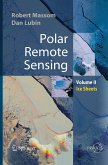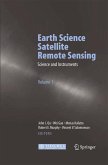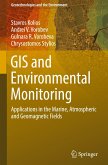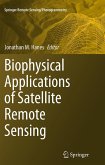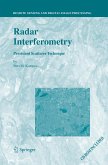Object-Based Image Analysis
Spatial Concepts for Knowledge-Driven Remote Sensing Applications
Herausgegeben:Blaschke, Thomas; Lang, Stefan; Hay, Geoffrey
Object-Based Image Analysis
Spatial Concepts for Knowledge-Driven Remote Sensing Applications
Herausgegeben:Blaschke, Thomas; Lang, Stefan; Hay, Geoffrey
- Broschiertes Buch
- Merkliste
- Auf die Merkliste
- Bewerten Bewerten
- Teilen
- Produkt teilen
- Produkterinnerung
- Produkterinnerung
This book brings together a collection of invited interdisciplinary persp- tives on the recent topic of Object-based Image Analysis (OBIA). Its c- st tent is based on select papers from the 1 OBIA International Conference held in Salzburg in July 2006, and is enriched by several invited chapters. All submissions have passed through a blind peer-review process resulting in what we believe is a timely volume of the highest scientific, theoretical and technical standards. The concept of OBIA first gained widespread interest within the GIScience (Geographic Information Science) community circa…mehr
Andere Kunden interessierten sich auch für
![Earth Science Satellite Remote Sensing Earth Science Satellite Remote Sensing]() Earth Science Satellite Remote Sensing149,99 €
Earth Science Satellite Remote Sensing149,99 €![Digital Photogrammetry Digital Photogrammetry]() Wilfried LinderDigital Photogrammetry52,99 €
Wilfried LinderDigital Photogrammetry52,99 €![Polar Remote Sensing Polar Remote Sensing]() Robert MassomPolar Remote Sensing208,99 €
Robert MassomPolar Remote Sensing208,99 €![Earth Science Satellite Remote Sensing Earth Science Satellite Remote Sensing]() Earth Science Satellite Remote Sensing149,99 €
Earth Science Satellite Remote Sensing149,99 €![GIS and Environmental Monitoring GIS and Environmental Monitoring]() Stavros KoliosGIS and Environmental Monitoring112,99 €
Stavros KoliosGIS and Environmental Monitoring112,99 €![Biophysical Applications of Satellite Remote Sensing Biophysical Applications of Satellite Remote Sensing]() Biophysical Applications of Satellite Remote Sensing75,99 €
Biophysical Applications of Satellite Remote Sensing75,99 €![Radar Interferometry Radar Interferometry]() Bert M. KampesRadar Interferometry164,99 €
Bert M. KampesRadar Interferometry164,99 €-
-
-
This book brings together a collection of invited interdisciplinary persp- tives on the recent topic of Object-based Image Analysis (OBIA). Its c- st tent is based on select papers from the 1 OBIA International Conference held in Salzburg in July 2006, and is enriched by several invited chapters. All submissions have passed through a blind peer-review process resulting in what we believe is a timely volume of the highest scientific, theoretical and technical standards. The concept of OBIA first gained widespread interest within the GIScience (Geographic Information Science) community circa 2000, with the advent of the first commercial software for what was then termed 'obje- oriented image analysis'. However, it is widely agreed that OBIA builds on older segmentation, edge-detection and classification concepts that have been used in remote sensing image analysis for several decades. Nevert- less, its emergence has provided a new critical bridge to spatial concepts applied in multiscale landscape analysis, Geographic Information Systems (GIS) and the synergy between image-objects and their radiometric char- teristics and analyses in Earth Observation data (EO).
Produktdetails
- Produktdetails
- Lecture Notes in Geoinformation and Cartography
- Verlag: Springer / Springer Berlin Heidelberg / Springer, Berlin
- Artikelnr. des Verlages: 978-3-662-50146-7
- Softcover reprint of the original 1st edition 2008
- Seitenzahl: 836
- Erscheinungstermin: 30. April 2017
- Englisch
- Abmessung: 235mm x 155mm x 45mm
- Gewicht: 1241g
- ISBN-13: 9783662501467
- ISBN-10: 3662501465
- Artikelnr.: 47848164
- Herstellerkennzeichnung
- Springer-Verlag GmbH
- Tiergartenstr. 17
- 69121 Heidelberg
- ProductSafety@springernature.com
- Lecture Notes in Geoinformation and Cartography
- Verlag: Springer / Springer Berlin Heidelberg / Springer, Berlin
- Artikelnr. des Verlages: 978-3-662-50146-7
- Softcover reprint of the original 1st edition 2008
- Seitenzahl: 836
- Erscheinungstermin: 30. April 2017
- Englisch
- Abmessung: 235mm x 155mm x 45mm
- Gewicht: 1241g
- ISBN-13: 9783662501467
- ISBN-10: 3662501465
- Artikelnr.: 47848164
- Herstellerkennzeichnung
- Springer-Verlag GmbH
- Tiergartenstr. 17
- 69121 Heidelberg
- ProductSafety@springernature.com
Why object-based image analysis.- Object-based image analysis for remote sensing applications: modeling reality - dealing with complexity.- Progressing from object-based to object-oriented image analysis.- An object-based cellular automata model to mitigate scale dependency.- Geographic Object-Based Image Analysis (GEOBIA): A new name for a new discipline.- Image objects and geographic objects.- Multiscale representation and object-based classification.- Using texture to tackle the problem of scale in land-cover classification.- Domain-specific class modelling for one-level representation of single trees.- Object recognition and image segmentation: the Feature Analyst® approach.- A procedure for automatic object-based classification.- Change detection using object features.- Identifying benefits of pre-processing large area QuickBird imagery for object-based image analysis.- A hybrid texture-based and region-based multi-scale image segmentation algorithm.- Semi-automated forest stand delineation using wavelet based segmentation of very high resolution optical imagery.- Quality assessment of segmentation results devoted to object-based classification.- Automated classification, mapping and updating: forest.- Object-based classification of QuickBird data using ancillary information for the detection of forest types and NATURA 2000 habitats.- Estimation of optimal image object size for the segmentation of forest stands with multispectral IKONOS imagery.- An object based approach for the implementation of forest legislation in Greece using very high resolution satellite data.- Object based classification of SAR data for the delineation of forest cover maps and the detection of deforestation - A viable procedure and its application in GSE Forest Monitoring.- Pixels toobjects to information: Spatial context to aid in forest characterization with remote sensing.- Automated classification, mapping and updating: environmental resource management and agriculture.- Object oriented oil spill contamination mapping in West Siberia with Quickbird data.- An object-oriented image analysis approach for the identification of geologic lineaments in a sedimentary geotectonic environment.- Classification of linear environmental impacts and habitat fragmentation by object oriented analysis of aerial photographs in Corrubedo National Park (NW Iberian Peninsula).- Multi-scale functional mapping of tidal marsh vegetation using object-based image analysis.- A Local Fourier Transform approach for vine plot extraction from aerial images.- Automated classification, mapping and updating: land use / land cover.- Object-based classification of IKONOS data for vegetation mapping in Central Japan.- Structural biodiversity monitoring in savanna ecosystems: Integrating LiDAR and high resolution imagery through object-based image analysis.- Fusion of multispectral optical and SAR images towards operational land cover mapping in Central Europe.- The development of integrated object-based analysis of EO data within UK national land cover products.- Automated classification, mapping and updating: urban applications.- Detecting informal settlements from QuickBird data in Rio de Janeiro using an object based approach.- Opportunities and limitations of object based image analysis for detecting urban impervious and vegetated surfaces using true-colour aerial photography.- Object-based Image Analysis using QuickBird satellite images and GIS data, case study Belo Horizonte (Brazil).- An object-based approach to detect road features for informal settlements near Sao Paulo,Brazil.- Development of new methodologies.- Object-oriented analysis of image and LiDAR data and its potential for a dasymetric mapping application.- Characterising mountain forest structure using landscape metrics on LiDAR-based canopy surface models.- Object detection in airborne laser scanning data - an integrative approach on object-based image and point cloud analysis.- Support Vector Machine Classification for Object-Based Image Analysis.- Genetic adaptation of segmentation parameters.- Principles of full autonomy in image interpretation. The basic architectural design for a sequential process with image objects.- Strategies for semi-automated habitat delineation and spatial change assessment in an Alpine environment.- Burning research questions, research needs and outlook.- On segment based image fusion.- Modelling uncertainty in high resolution remotely sensed scenes using a fuzzy logic approach.- Assessing image segmentation quality - concepts, methods and application.- Object-fate analysis - spatial relationships for the assessment of object transition and correspondence.
Why object-based image analysis.- Object-based image analysis for remote sensing applications: modeling reality - dealing with complexity.- Progressing from object-based to object-oriented image analysis.- An object-based cellular automata model to mitigate scale dependency.- Geographic Object-Based Image Analysis (GEOBIA): A new name for a new discipline.- Image objects and geographic objects.- Multiscale representation and object-based classification.- Using texture to tackle the problem of scale in land-cover classification.- Domain-specific class modelling for one-level representation of single trees.- Object recognition and image segmentation: the Feature Analyst® approach.- A procedure for automatic object-based classification.- Change detection using object features.- Identifying benefits of pre-processing large area QuickBird imagery for object-based image analysis.- A hybrid texture-based and region-based multi-scale image segmentation algorithm.- Semi-automated forest stand delineation using wavelet based segmentation of very high resolution optical imagery.- Quality assessment of segmentation results devoted to object-based classification.- Automated classification, mapping and updating: forest.- Object-based classification of QuickBird data using ancillary information for the detection of forest types and NATURA 2000 habitats.- Estimation of optimal image object size for the segmentation of forest stands with multispectral IKONOS imagery.- An object based approach for the implementation of forest legislation in Greece using very high resolution satellite data.- Object based classification of SAR data for the delineation of forest cover maps and the detection of deforestation - A viable procedure and its application in GSE Forest Monitoring.- Pixels toobjects to information: Spatial context to aid in forest characterization with remote sensing.- Automated classification, mapping and updating: environmental resource management and agriculture.- Object oriented oil spill contamination mapping in West Siberia with Quickbird data.- An object-oriented image analysis approach for the identification of geologic lineaments in a sedimentary geotectonic environment.- Classification of linear environmental impacts and habitat fragmentation by object oriented analysis of aerial photographs in Corrubedo National Park (NW Iberian Peninsula).- Multi-scale functional mapping of tidal marsh vegetation using object-based image analysis.- A Local Fourier Transform approach for vine plot extraction from aerial images.- Automated classification, mapping and updating: land use / land cover.- Object-based classification of IKONOS data for vegetation mapping in Central Japan.- Structural biodiversity monitoring in savanna ecosystems: Integrating LiDAR and high resolution imagery through object-based image analysis.- Fusion of multispectral optical and SAR images towards operational land cover mapping in Central Europe.- The development of integrated object-based analysis of EO data within UK national land cover products.- Automated classification, mapping and updating: urban applications.- Detecting informal settlements from QuickBird data in Rio de Janeiro using an object based approach.- Opportunities and limitations of object based image analysis for detecting urban impervious and vegetated surfaces using true-colour aerial photography.- Object-based Image Analysis using QuickBird satellite images and GIS data, case study Belo Horizonte (Brazil).- An object-based approach to detect road features for informal settlements near Sao Paulo,Brazil.- Development of new methodologies.- Object-oriented analysis of image and LiDAR data and its potential for a dasymetric mapping application.- Characterising mountain forest structure using landscape metrics on LiDAR-based canopy surface models.- Object detection in airborne laser scanning data - an integrative approach on object-based image and point cloud analysis.- Support Vector Machine Classification for Object-Based Image Analysis.- Genetic adaptation of segmentation parameters.- Principles of full autonomy in image interpretation. The basic architectural design for a sequential process with image objects.- Strategies for semi-automated habitat delineation and spatial change assessment in an Alpine environment.- Burning research questions, research needs and outlook.- On segment based image fusion.- Modelling uncertainty in high resolution remotely sensed scenes using a fuzzy logic approach.- Assessing image segmentation quality - concepts, methods and application.- Object-fate analysis - spatial relationships for the assessment of object transition and correspondence.

